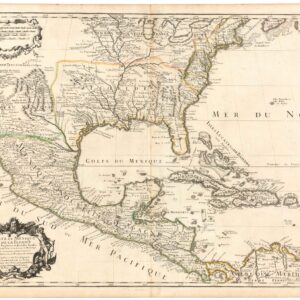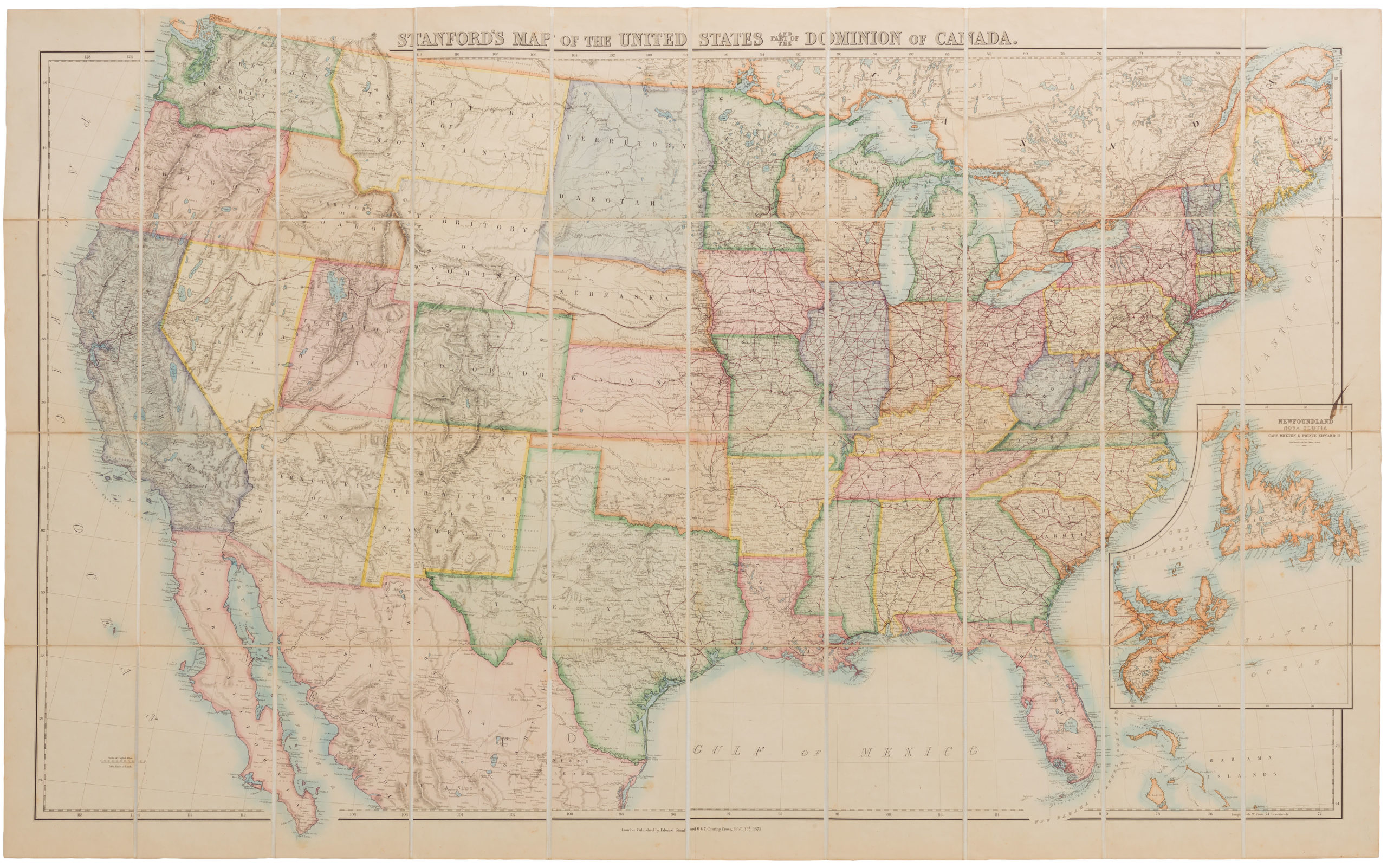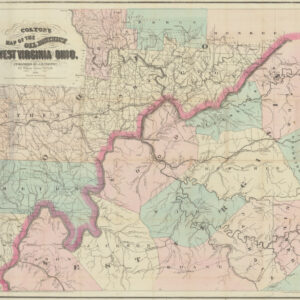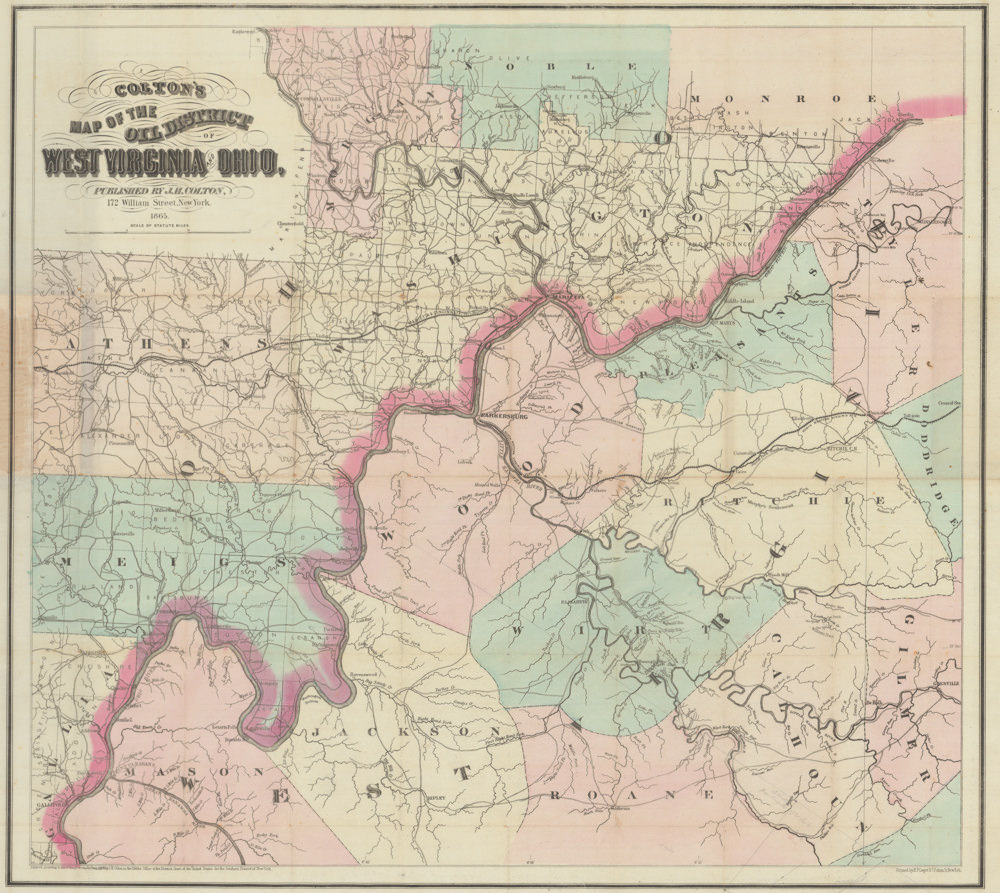The first great regional map of Florida and the Gulf Coast.
Florida et Apalche
Out of stock
Description
This captivating late 16th century map is focused on Florida and the Gulf of Mexico, with parts of Cuba and the West Indies, up the east coast of North America to the Outer Banks of Carolina (C. de Arenas). It was one of the important regional maps in geographer Cornelius Van Wytfliet’s Descriptionis Ptolemaicae augmentum sive Occidentis notitia brevis commentario, which was published in Leuven in 1597 and was the first atlas devoted exclusively to the New World.
This is a map that belongs in select company: it is one of only 3 printed maps published in the 16th century to depict this area with any accuracy and is one of the earliest to focus on the southeast and to use ‘Florida’ in its title. It is the first printed map to show Cap. de Canaveral, C. de Florida (on Key Biscayne), and to make reference to the Everglades, which it does with the label Aquatio. A large patch of islands labeled Roques would appear to represent the Florida Keys.
The first regional map of the southeast and Gulf Coast was Gastaldi’s Nueva Hispania Tabula Nova, which was re-issued by Ruscelli. Florida et Apalche is based on a smaller map of the Florida peninsula published in 1584 by Abraham Ortelius (which itself was based on a manuscript map drawn by the topographical engineer Gerónimo de Chaves). Wytfliet’s map ventures further inland than that of Ortelius, including a depiction of the Appalachian Mountains. He has drawn on a wide variety of sources, but the map echoes the explorations of three famous Spanish conquistadores: Ponce de León, Pánfilo de Narváez, and Hernando de Soto.
Ponce de León grew wealthy during his time as governor of Puerto Rico and became in effect a self-funded conquistador. He set out to explore new lands in 1513 with three ships in search of gold, silver, and slaves (the Fountain of Youth legend is a later invention). When he came upon the east coast of the Florida peninsula he mistook it for an island. He named the land La Florida because it was the Easter season, which in Spanish is Pascua Florida, “feast of flowers.” At about Cape Canaveral the expedition turned south only to face a powerful current unlike any other they had previously experienced. This was the Gulf Stream, which would later served as a maritime highway between Europe and North America, the Old and New Worlds.
In 1521, Ponce de León returned to Florida intent on establishing a Spanish colony. The expedition landed somewhere on the coast of southwest Florida, likely in the vicinity of Charlotte Harbor or the Caloosahatchee River, areas which Ponce de León had visited in his earlier voyage to Florida. The would-be colonists were repelled by the native Calusa and Ponce de León was hit in the thigh with a poison dart and later died of his wound back in Cuba. This dramatic event finds its way onto our map in the form of a place name – G. de Juan Ponce – in the area corresponding to Charlotte Harbor.
The imposing and ruthless Pánfilo de Narváez, who like Ponce de León was born in Spain and made a fortune in the West Indies, led his own expedition six years later in 1527. The intended destination, Rio de las Palmas (near present-day Tampico, Mexico), is marked on our map. For some reason that remains a mystery, the fleet instead landed on the opposite side of the Gulf near Tampa Bay. Despite the obvious evidence to the contrary, namely that the sun set behind the sea rather than the land, the expedition pilots insisted that they had land in Mexico and were close to their target destination.
The details of the Narváez expedition are known from the account of one of its few survivors, Álvar Núñez Cabeza de Vaca. Narváez decided to divide his men into two groups, one to investigate by sea and the other to explore inland. Narváez remained with the land force and began searching for gold and plunder. The local Tocobaga people, certainly as a way to get rid of the unwanted guests, informed the Spanish that the gold they sought was to be found in Apalachee, to the north in the area of the Florida panhandle and present-day Tallahassee. The Apalachee attacked and harassed the Spaniards until they sought refuge at what is now known as Apalachee Bay, but which they named Bahia de los Caballos because they were forced to sacrifice and eat their horses for food. Pánfilo de Narváez drowned in the Gulf trying to rejoin the rest of his original expedition.
Despite the travails and demise of his predecessors, along came another Spanish conquistador in search of riches along the Gulf of Mexico: Hernando de Soto. The Soto expedition left Havana in May 1539 and landed most likely at Tampa Bay, which they named Bahía de Espiritu Santo, as indicated on our map. The Spaniards eventually made their way north to Apalachee, where they are said to have observed the first-ever Christmas in present-day United States, an event possibly recorded on our map was the place name P.S. Iuan de natividad. In addition to Florida, Hernando de Soto and his men explored parts of Georgia, Mississippi, Arkansas, and Louisiana. Many of the inland details, town such as Cofaquj, Cosle, Tali, come from the surviving reports of the expedition.
The conquistador himself died of an unknown illness and his body was placed into the Mississippi River, which was called the Rio de Santo Spirito. It appears that the Spaniards neither mapped the Mississippi, nor understood its importance. For nearly two centuries after the Soto expedition, European explorers missed entrance to the Mississippi from the Gulf. Part of the problem is hinted at on Florida et Apalche. Europeans were looking for what they assumed would be a bay instead of delta. The Mississippi delta is so massive that it obscures the great river that feeds it. Indeed, on our map, the R. de S. Spirito empties into a large bay, in front of which is the label Mar pequeño.
Overall, Wytfliet’s map is one of the great representations of early Florida and the Gulf Coast.
Cartographer(s):
Cornelis van Wytfliet (died around 1597) was a geographer from Leuven in the Habsburg Netherlands, best known for producing the Descriptionis Ptolemaicae augmentum sive Occidentis notitia brevis commentario, as a supplement to Ptolemy’s Geographia.
‘Descriptionis‘ was published in Leuven in 1597 and is considered the first atlas devoted exclusively to the New World. It featured nineteen maps: one world map and eighteen regional maps. The regional maps, in particular, are notable as early representations of specific areas of North and South America.
Condition Description
Margins professionalyl extended; else excellent.
References
Burden, Mapping of America. 104; Cumming, The Southeast in Early Maps. 18.
Davis, J. E. (2018). The Gulf: The Making of an American Sea. W W Norton & Co.
De Peuter, Stanislas. Cornelis Van Wytfliet: The Age of Discovery and Colonization revisited. Mercator Revisited Conference, Belgium.







![[AMERICAN REVOLUTION] Boston, George Washington, Franklin, Philadelphia, Washington, D.C.](https://neatlinemaps.com/wp-content/uploads/2024/05/NL-02090a_thumbnail-300x300.jpg)